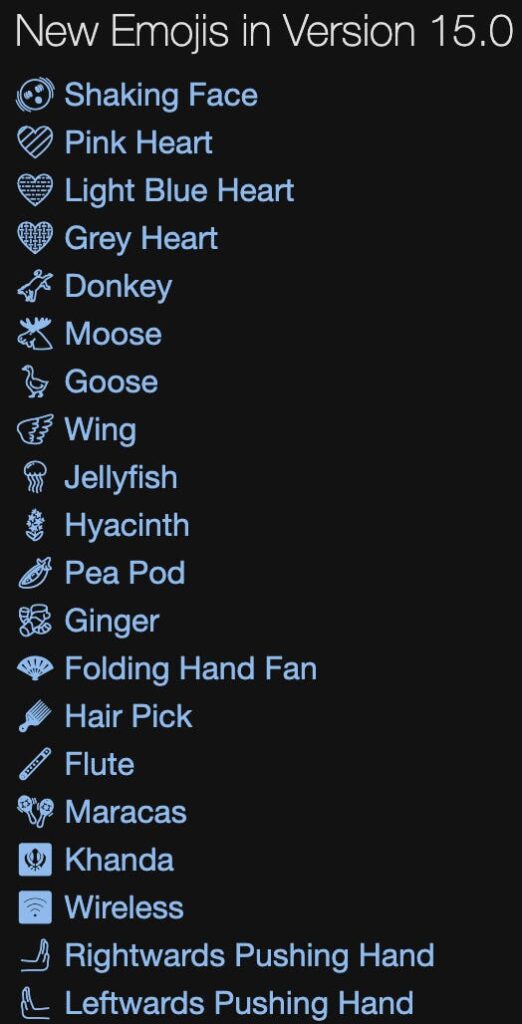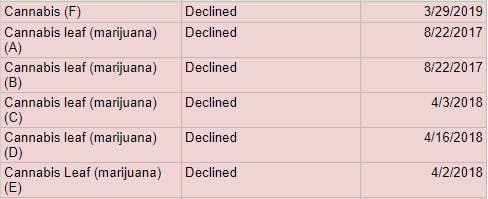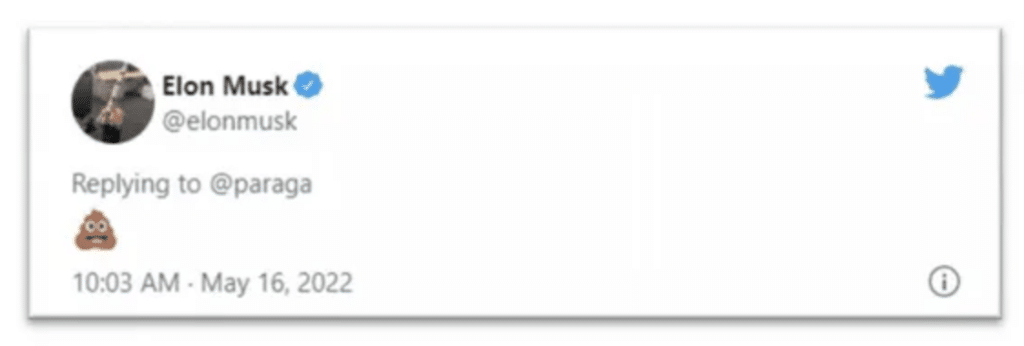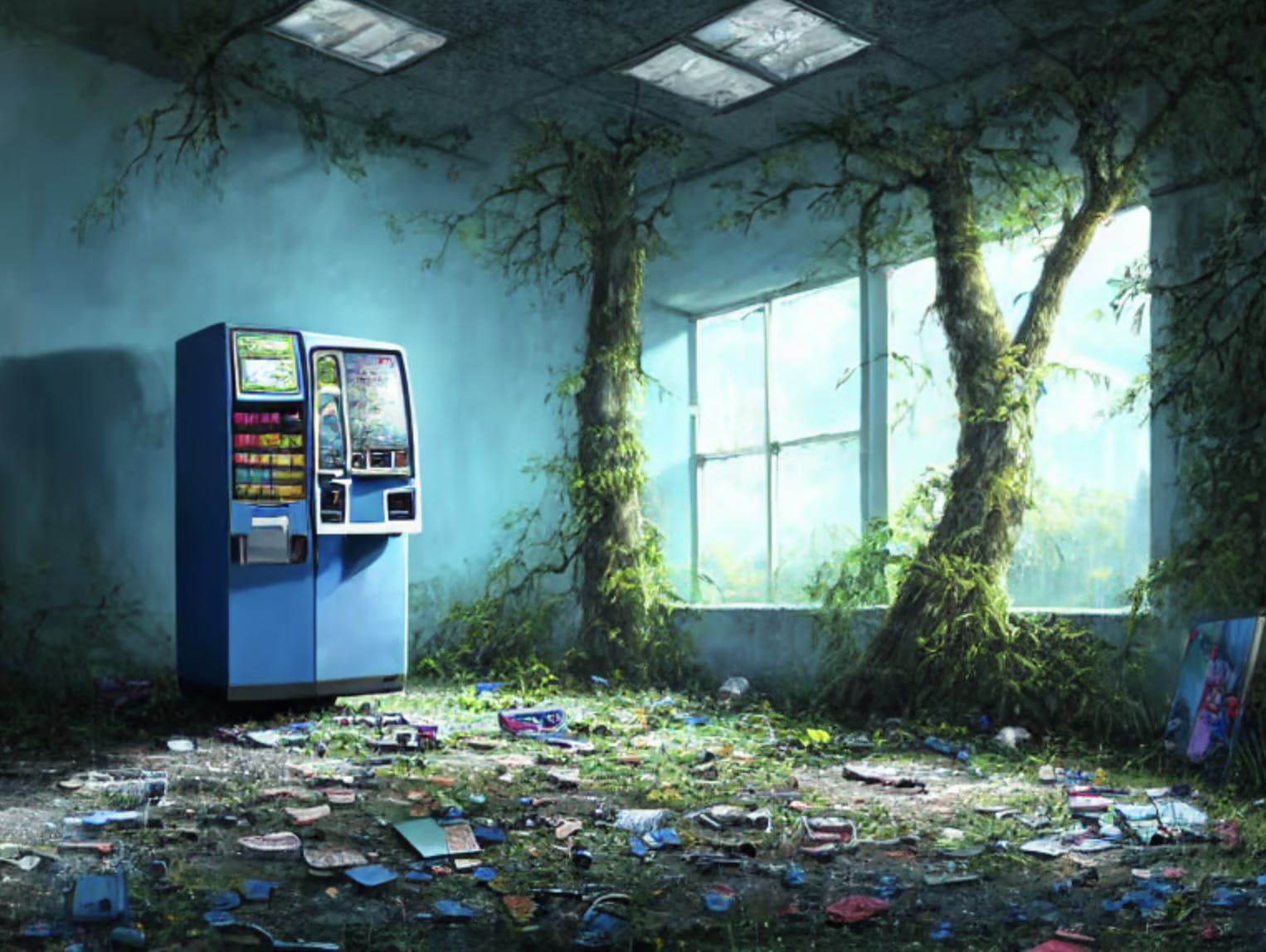This week we’re taking a turn for the lighthearted. Today’s issue is about the world of emojis.
Where did they come from? Who governs the “emoji economy?” How do they get made? How does it all work?
This issue is packed with cool facts and answers to questions you didn’t know you had.
Let’s go 👇
Table of Contents
Where did emojis come from?
Emojis are a new “universal language” (Well, besides English. Sorry everyone, there’s no point in resisting ).
But long before English, heck long before Germanic languages, you had Mesopotamian languages : image-based languages like Sumerian, Cuneiform and Egyptian Hieroglyphs. 📜

But there’s one image-based language country where emojis are taken more seriously than anywhere else — Japan
Japanese origins 🇯🇵
Emojis have Japanese roots . The term “emoji” itself is Japanese, but despite what you might think, the word’s origin has nothing to do with emotion.
It’s actually a hybrid of two words:
- “eh,” which means “picture” and
- “moji,” which means “character“
Put them together and you have “picture character”; aka a pictorial-based language.
Over time, particularly in the Western world, society did begin associating emoji with emotion, leading to alternate terms like “emote” and “emoticon.”
The first emojis were from Softbank
The first emojis came from Japan in the late 90s.
The nation was finally emerging from its lost decade — a mega recession driven by a massive real estate bubble.
Spearheading the optimism was a little company called SoftBank . Before it became the juggernaut tech holding company it is today, Softbank was a cell phone manufacturer known as J-Phone.
When J-Phone released their SkyWalker DP-211SW mobile phone, they baked in a set of 90 black and white characters that could be used to replace words while texting.

Emojis didn’t take off right away. The phone was a failure, and emojis remained an obscure idea until 1999, when an employee from prominent telco NTT DoCoMo named Shigetaka Kurita expanded and colorized the set to 176 images that could be used when texting between DoCoMo phones.

This resonated. Other cell carriers scrambled to copy the small pictorials that were quickly becoming popular.
Spreading a new global language
From Japan, emojis spread rapidly throughout Asia.
China’s use kicked into high gear when Tencent released their first instant messaging app in 1999. China has over 300 languages ; emojis help overcome language barriers and represent tonality and emotion.
Oddly, it took North America quite a while to hop on the emoji train. It was more of a steam locomotive 🚂 than a bullet train 🚆
But a decade later, the emoji timeline started to really take shape:
- 2008: Apple takes notice and releases its iOS 2.2 update to Japanese users only. Technically, it was the first emoji keyboard on the iPhone, but people outside Japan had to jailbreak their devices to access it!
- 2009: Google adds emojis to Gmail. Interestingly, Google still referred to them as “emoticons” at the time
- 2011: Finally, three years after the iPhone’s release, Apple brought the emoji keyboard we all know and love to iOS 5. Users across the globe quickly catch on.
Emojis today
Today, there are 3,664 emojis . A picture tells a thousand words, and it’s amazing how important emojis have become in conveying meaning.
Compare these two sentences:
Yeah, that lunch was really good
vs
Yeah, that lunch was really good 🙄
The addition of the emoji completely changes the way the sentence is interpreted. In fact, scientists have found that our brains react to sarcastic tones and sarcastic emojis in the same way.
This reinterpretation is so significant that there are now legal implications to using certain emojis. More on this below.
How do new emojis get added?
The Unicode Consortium is the official body that creates and maintains all characters.
This Californian non-profit can permanently add (but not remove) emojis to our devices. Every few years, the organization releases an update, where 30-100 new emojis are published. The latest release is Unicode Version 15.0 , which approved new emojis like Donkey, Jellyfish, Hair Pick, Maracas, and Pushing Hands.

But how does Unicode decide which emojis to include?
There’s an official Emoji Submission Process .
Applying is free, but the application is lengthy, and getting one in is tough:
- Emojis cannot be redundant
- They cannot promote brands. No Mickey, no McDonalds, no Alts.co logo (booo)
- They cannot further a cause, no matter how worthwhile
- They cannot have a likeness to any real, living humans. There will never be a Kristen Stewart or Trump emoji. In the meantime, these will suffice: 🫦 🍊
You can actually access a list of proposed and declined emojis . There are some interesting ones in there, including a cinnamon roll (declined 4 times) tequila (don’t they know it’s North America’s fastest-growing spirit ?!) and the emojification of Bitcoin.
It looks like people have tried to get a cannabis leaf emoji added on six separate occasions:

Japanese “monopoly?”
Okay, monopoly is too strong of a word. But the development of new emojis has led to an interesting phenomenon where legacy emojis are biased toward Japanese culture.
For example, you can easily find emojis of Japanese culture like Sake 🍶, Rice Balls 🍙, Oni Demons 👹, Bullet Trains 🚅, even Love Hotels, or Japanese brothels 🏩 (👈 Huh, I always just assumed those were regular hotels)
We’ve had narutomaki, or Fish Cake With Swirl 🍥 since 2010. Yet it took until 2022 for the Moose emoji to be added.

Italians don’t have a Gondola emoji, or a Leaning Tower Of Pisa. (I suppose you could take the Classical Building emoji and italicize it 🏛️, but meh)
Brits don’t have Stonehenge, Big Ben, or a Red Phone Booth. There’s a Statue of Liberty 🗽 but no Eiffel Tower. (Although interestingly, we do have the very similar Tokyo Tower, which adds insult to injury)

Japanese influence explains why red is used in Chart with Upwards Trend 📈. Unlike in America and much of the world, in Japan, red is used to represent increases in the value of a stock, while green is used to represent decreases.
There’s even a group called Emojination whose entire purpose is to help people lobby for new emojis. And they have a successful track record!
- They ran a Kickstarter for the Dumpling emoji 🥟
- They helped Rayouf Alhumedhi and Reddit co-founder Alexis Ohanian get the Hijab emoji approved 🧕
- Worked with vegetarians for the Broccoli emoji 🥦
- Assisted the American Chemical Society in getting a new DNA emoji 🧬
Let’s not forget Japan invented emojis, so I think it makes sense if they continue to have a disproportionate share of cultural emojis,
But Unicode is making moves to improve representation and global relevance .
What are the most popular emojis?
According to an Emojipedia analysis , the top 10 emojis used on Twitter in 2021 were:
- 😭 Loudly Crying Face (incredible, I never use this one)
- 😂 Face with Tears of Joy (rumors of this emoji’s demise have been greatly exaggerated )
- 🥺 Pleading Face
- 🤣 Rolling on the Floor Laughing
- ❤️ Red Heart
- ✨ Sparkles
- 🙏 Folded Hands (This one is both designed and named poorly. Some people originally saw this as a high-five . Also, the hands aren’t even folded!)
- 😍 Smiling Face with Heart-Eyes
- 🥰 Smiling Face with Hearts
- 😊 Smiling Face with Smiling Eyes
Emojis in the courtroom
Emoji interpretation is becoming increasingly important in a legal context.
According to a study from Professor Eric Goldman, emojis have played a role in over fifty US court cases.
In particular, the Pile of Poo emoji 💩 has an oddly long history of appearing in court.
Corrections officer gets a fine
First, in a fairly run-of-the-mill 2018 suit, a corrections officer sued her colleagues for workplace discrimination. But, shit hit the fan when the plaintiff aired her grievances on Facebook when the case had already begun.
She wrote:
“MESSING WITH ME WILL GET YOU YOUR OWN CERTIFIED MAIL. SO GLAD THAT THE ARROGANCE OF THIS EMPLOYER HAS THEM BELIEVING THEIR OWN 💩”
The defense lawyers argued this constituted inappropriate language, and the plaintiff was fined $17,000 for her remarks.
Although the poop emoji wasn’t part of the actual case, this was the first time it had skidded its way into court.
Elon Musk vs Twitter
But it wasn’t the last.
In 2022, Elon Musk entered into a legal battle with Twitter after he tried to back out of his billion-dollar purchase.
The case took a turn for the ridiculous when prosecutors turned Musk’s tweets back on himself. As part of the prepared documents , they noted a single-character tweet Elon made to then-Twitter CEO Parag Agrawal:

As we know, Elon was forced to follow through with his Twitter merger.
But don’t worry, he’s still putting the emoji to good use .
Prostitution debacle 👠💰
Things get much trickier when emojis are used as actual evidence.
For one, their interpretation is subjective and can be wildly different from their intended use. Remember each platform has a unique look for each emoji, and juries can interpret them differently.
This all came to a head in a 2018 Bay Area sex trafficking case, where prosecutors said Instagram DMs sent by the defendant were evidence of guilt, including this one in particular:
“Teamwork make the dream work 👠💰”
Prosecutors argued the two emojis indicated a work environment . The defendant claimed he was just trying to get laid. A sex trafficking expert was called upon for his thoughts, and testified the emojis likely suggested prostitution.
To the moon 🚀 🌕
This past February, a federal court ruled that emojis can be construed as investment advice.
We now have precedent stating that the Rocket Ship 🚀, Graph 📈 and Moneybags 💰 emojis “objectively mean a financial return on investment.”
The ruling comes in the wake of Dapper Labs vs the SEC , a case fought over whether their NBA Top Shot NFTs should be considered securities, not collectibles.
Closing thoughts
They’ve become such a cultural phenomenon that they’re now used by 90% of humanity, and are the world’s fastest-growing “language.”
I put “language” in quotes because emojis aren’t technically a language. But now linguists are debating this . Heck, Moby Dick has already been rewritten entirely in emoji . What more do you want?
Emojis are invading our business emails, courtrooms and our AI. When feeding their language model, Google included 402 “ Dirty, Naughty, Obscene, and Otherwise Bad Words ,” and one single emoji.
Yup, you guessed it: 🖕
It’s fascinating how this new universal language has different interpretations across countries. The Middle Finger isn’t even considered a bad gesture in some countries. Yet in parts of the Middle East the Thumbs Up is offensive .
I also love how emojis trend over time. During covid. And now suddenly we’re seeing a surge in Sparkles, which Gen Z (and you know, ✨ cool people like me✨) use to show sarcasm.
Some hate them, and some say they’re overused. But to me, emojis add a layer of warmth and personality to the cold, detached nature of digital text.
At their best, they help the world communicate better. Like the global proliferation of English, I think it’s a very good thing. 🌍
Further reading:
- Check out the top 30 ancient Egyptian hieroglyphs
- Emojis aren’t debasing language, they’re enriching it
- Emojipedia is the 2nd biggest player in this world after Unicode. It’s to emojis what IMDB is to movies. They have some terrific emoji stats .
- Duolingo has even more .
- What’s the plural of emoji?
- From Emoji Request : One the world’s most requested emojis is a baseball bat
- Line lets you design custom emojis and profit from their use.
- Why Unicode decided not to make any more flag emojis
Disclosures
- Our ALTS 1 Fund has no holdings in any companies mentioned in this issue
- Personally, I’ve always been partial to The Horns emoji 🤘












